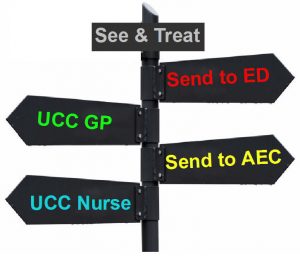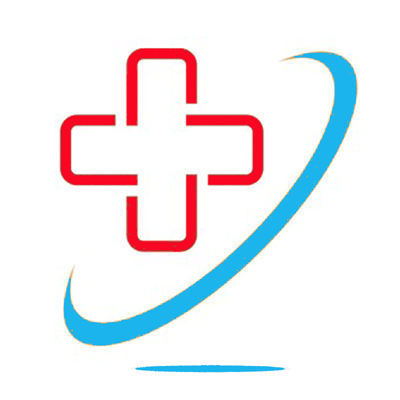Urgent Care Centre Streaming – results begin to flow
 At long last after all that abstraction work, we are beginning to get results and can examine the outcome of GP streaming in the UCC.
At long last after all that abstraction work, we are beginning to get results and can examine the outcome of GP streaming in the UCC.
We’ve focused analysis on the five main streaming outcomes. Each outcome was appraised by an ED consultant examining the patient’s UCC notes.
We were able to obtain 904 evaluable records where we had both a completed SortED record and an equivalent UCC record with confirmed identity.
Three options deal with the patient within the UCC. The remaining two send the patients to either the ED or to Ambulatory Emergency Care (AEC), a unit on the hospital site with rather more investigative capabilities than within the UCC.
See & Treat is where the Streamer GP solves the problem at streaming. Only 4.0% (36/904) patients were in this category. Our consultant review agreed that 31 patients were suitable for See & Treat, but also suggested that 52 patients had been suitable for this route.
UCC nurse or care practitioner This route was used for 430 (47.6%) of patients. 378 decisions were approved by the consultant and 52 not approved. The consultant selected this route for 367 patients, a slightly lower % (43.9%) than that selected by GP streamers.
Of concern in this route was the number of patients who ended up with complex pathways when they could have been better streamed in the first place (ED staff call this DIRE – Doing It Right Eventually!). 20 patients sent to UCC nurses were sent on to the ED during their second consultation. For 6 patients the nurse transferred the patient to a UCC GP and one of these was sent by the GP to ED. 11 patients were sent by the nurse to AEC (Ambulatory Emergency Care).
UCC GP This route was used for 207 (22.9%) of patients and the consultant felt this was appropriate for 163 patients and inappropriate for 44. However, the overall rate of patients streamed to UCC GPs was close to the proportion evaluated by the consultant as suitable for this route – 209 patients (23.1%).
Again there were signs of sub-optimal streaming, resulting in complex pathways for patients. At the second consultation the GPs sent 25 patients to ED and 5 to AEC.
All these ‘DIRE’ routes mean additional and unnecessary waits for the patient.
Send to ED This streaming route was used for 156 (17.3%) of patients. However with the complex pathways mentioned above a total of 202 (22.3%) patients eventually found their way to ED. This is of major concern both for patient safety, patient experience and for commissioning groups (since unnecessary ED attendance costs more than a UCC visit).
Of the 156 patients streamed to ED, 133 were deemed inappropriately streamed by the consultant and only 23 (3%) patients needed UCC to ED transfer at streaming. The consultant found only 27 patients which merited this route.
Send to AEC Only 48 patients (3.0%) were streamed directly to AEC. A further 16 patients got there eventually (5 from GP and 11 from nurse second consultations). This was well below the 162 patients (17.9%) the consultant would have sent this route. Of the 48 sent to AEC, 40 were deemed appropriate for AEC, however the main concern is why so few patients were sent there.
Miscellaneous other options were used for 27 (3.0%) patients including: sending patients to eye casualty at Chelsea & Westminster, pharmacy, direct referrals to surgeons or other specialists etc. 23 of these options were deemed appropriate by the consultant. These other options should, in the consultant’s opinion, have been used for 57 (6.3%) patients.
Conclusions
- GP streamers send too many patients to ED
- They often neglect the option to send patients to Ambulatory Emergency Care
- Changes to streaming outcomes during later consultations result in complex paths and excessive delay, before arrival at ED or AEC
- Poor streaming decisions cost the patient unnecessary waiting time
- There are health economics implications in these findings
Gillie Francis – May 2018


